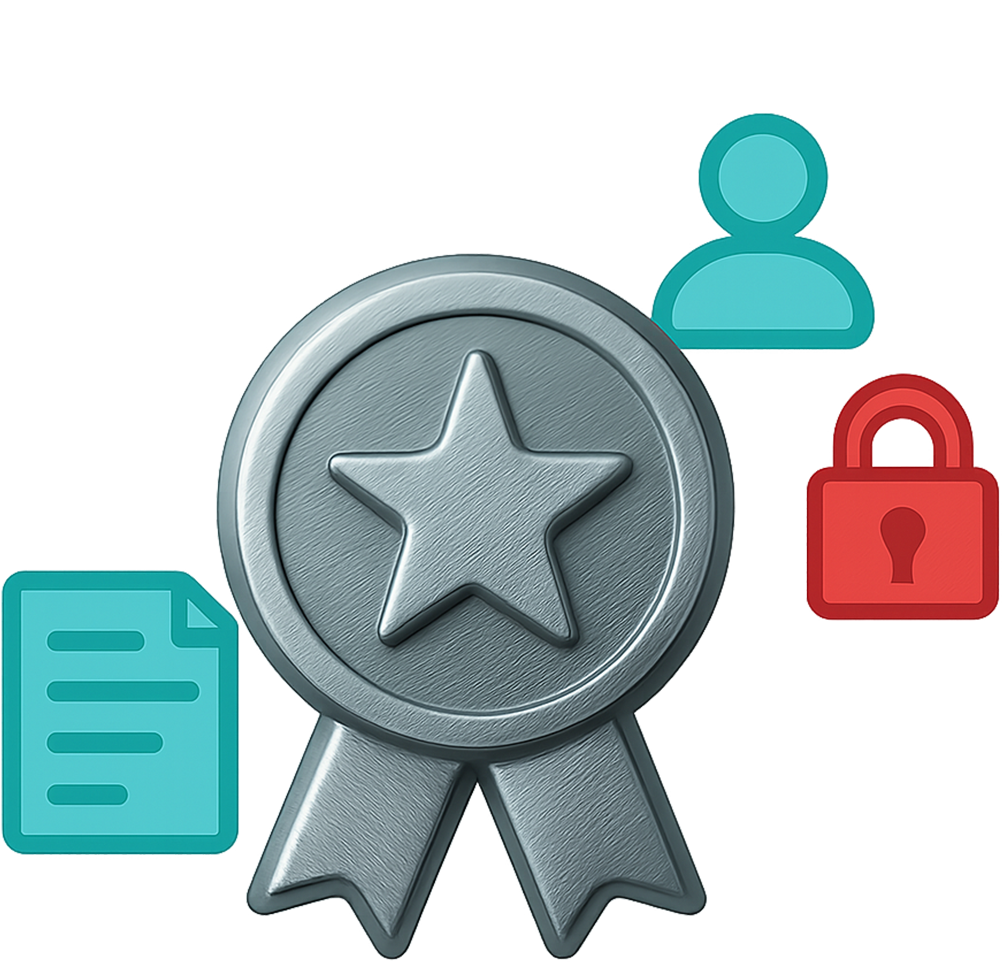Quality Management
ISO 9001 –
Structured Quality Management
With an effective quality management system, you increase customer satisfaction, efficiency, and competitiveness.

The Essentials at a Glance
The ISO 9001 is the globally recognized standard for quality management systems (QMS) and applies across industries to companies of all sizes.
It defines requirements to ensure that processes are designed to consistently achieve high quality products and services – from development and production to customer service.
The focus is not only on the fulfillment of customer requirements, but also on clear process orientation, risk assessment, and the involvement of all relevant stakeholders.
The standard follows the principle that quality is not a one-time project, but a continuous improvement process aimed at long-term business success and sustainable customer satisfaction.
A quality management system according to ISO 9001 is like a roadmap for consistently high performance:
It ensures that all processes are documented, clearly structured, and regularly reviewed.
This allows companies to prevent errors instead of correcting them afterwards and to increase efficiency without compromising quality.
The standard is deliberately kept flexible so that it can be applied in all industries and company sizes. The key is not only meeting formal requirements, but ensuring the system becomes lived practice throughout the organization – from top management to individual departments.
ISO 9001 is based on clear principles that secure a company’s long-term success:
-
Customer orientation: The needs and expectations of customers are the main focus.
-
Leadership responsibility: Top management takes active responsibility for quality.
-
Process-oriented approach: Processes are considered as an interconnected system.
-
Continuous improvement: Ongoing optimization is an integral part of corporate culture.
-
Evidence-based decision making: Decisions are based on data, not assumptions.
So funktioniert the implementation of this standard
The introduction of ISO 9001 begins with a detailed assessment of your existing processes and a comparison with the standard’s requirements. The aim is to create transparency and identify where improvements are necessary or beneficial. Based on these insights, a clearly structured implementation plan is developed that takes both technical and organizational measures into account.
A key success factor is the involvement of all employees – only if everyone in the company understands the goals and benefits of a quality management system can it be effective in the long term. This includes regular training, practical guidance, and open communication between all departments. Clearly defined responsibilities also play an important role, ensuring that everyone knows how they contribute to overall success.
-
In practice, implementation is usually divided into three main phases:
-
Analysis & Planning
-
Recording of existing processes
-
Identification of potential improvements
-
-
Implementation & Documentation
-
Creation of the necessary process descriptions and work instructions
-
Introduction of measurable quality objectives
-
-
Training & Continuous Improvement
-
Conducting targeted employee training – e.g. via our secopan e-learning platform
-
Regular review and adjustment of processes
-
-
Our Support for You
We support you in the implementation, optimization, and certification according to ISO 9001 – from the initial analysis to the successful audit.
We place great importance on ensuring that your quality management is not just a mandatory task, but delivers real added value for your company and your customers.
-
Gap Analysis: Identifying areas for action
-
Project Support: From planning to certification
-
Process Optimization: Increasing efficiency and defining clear responsibilities
-
Training & Awareness: Practice-oriented training for all levels
-
Audit Preparation: Support for internal and external audits
Your Advantage: We combine knowledge of the standards with practical consulting, ensuring that your quality management is not only certified but truly lived.
